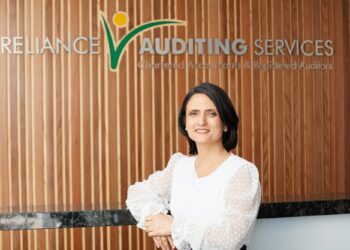SMSF Association deputy chief executive Peter Burgess had said with the revised start date for the government’s proposed exempt current pension income (ECPI) changes scheduled for 1 July this year, the industry should be keeping an eye on any updates with this measure.
The government proposes to allow superannuation funds with interests in both accumulation and retirement phases during an income year to choose their preferred method of calculating exempt current pension income.
Speaking on a recent Accurium webinar, head of education Mark Ellem said that while the profession waits on the draft legislation to see how it works, it will be important to consider the approach in dealing with SMSFs across the past financial years along with pre-2017–18 methods.
“For example, a common scenario we will see is in the first half of the year there will be a mixed interest with both the retirement phase and accumulation, and then entering into the second half of the year the accumulation moves into the retirement phase such that the fund for that second half of the year solely consists of retirement phase pensions,” he said.
“Also remember to assume this fund does not have disregarded small fund assets because, keep in mind, if it does, it can’t use the segregated method; it has no choice but to use the proportionate or unsegregated method.”
Mr Ellem said the proposed change is the ability to calculate ECPI under two methods, one using the current methods since the 2017–18 financial year changes, where we apply the segregated method to the period consisting of wholly retirement interest.
“For the other part of the year, we use the propionate method and unsegregated method which requires the actuarial certificate multiplied by the relevant percentage by the income earned in that period. Add it to the income earned in the second period which doesn’t require an actuarial certificate and that is our total ECPI calculation,” he said.
“Our second option, depending on how this proposal comes through, is applying what we call the old industry method. This was done prior to the 2017–18 financial year, where unless the fund consists wholly of retire[ment] phase pension for the entire year, simply go to an actuary to get the percentage and apply that to all the year’s income.”
This is proposed to apply from 2021–22, but Mr Ellem said the industry is still waiting to see how this will work.
“We will need to consider how we will apply the options and we will have the retrospective ability to apply the best option that gives the best tax outcome,” he said.
“Again, we’ll wait for that destination and it would be nice to have that legislation out sooner than later, because it may require changes to actuarial administration platforms as was done when the new method was adopted during the 2017–18 financial year.”
Another change SMSF professionals are hoping for and expecting is in relation to the anomaly where a fund that is wholly in the retirement phase still needs to get an actuarial certificate for 100 per cent ECPI, according to Mr Ellem.
“That’s a scenario where during the 2017–18 year, we have a single member all in the retirement phase. Whether the fund can use the segregated method depends on the total super balance at 30 June prior, so the 2017–18 year, that’s the total super balance for 30 June 2017 that’s under $1.6 million, so we can use that segregated method and those certificate claim or the income is except,” he said.
“In the 2018–19 year, again with total super balance at 30 June 2018 under $1.6 million, we can still use the segregated method with no certificate.
“But at the end of 30 June 2019, the value of assets has increased to $1.62 million. Now that doesn’t affect the 2018–19 year because the test is on the total super balance at 30 June prior, but it affects the following 2019–20 year, even though assets had dropped $1.59 million at 30 June 2020.
“Because the total super balance at 30 June prior was at least $1.6 million, it can’t use the segregated method, it must get an actuarial certificate and claim the income under the unsegregated, also known as the proportionate method.
“Again, that proposal as with the others are not coming into the 2021–22 year, so remember we have to apply the current methodology for claiming ECPI under these scenarios for both the 2019–20 year which most are preparing accounts for and also the current financial year.”



When is the 3 year audit coming